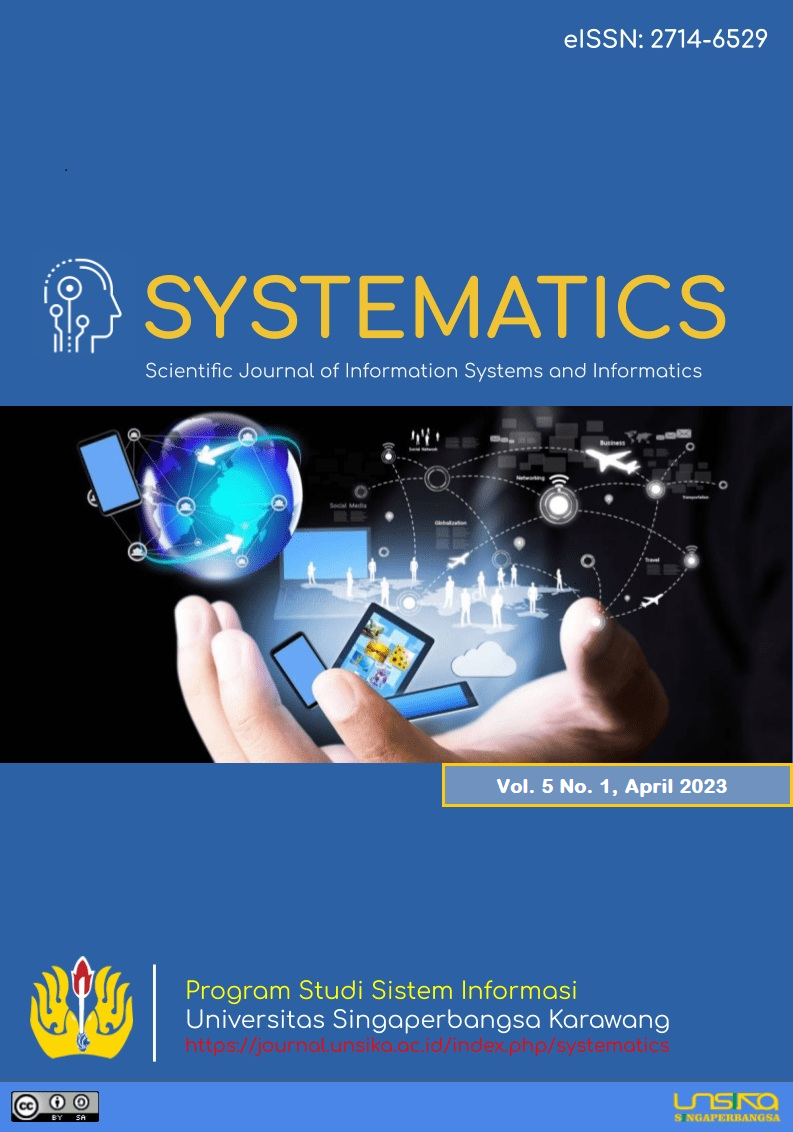Improving Employee Performance and Discipline Through Android-Based Employee Attendance Applications
Meningkatkan Kinerja dan Disiplin Karyawan Melalui Aplikasi Absensi Karyawan Berbasis Android
DOI:
https://doi.org/10.35706/sys.v5i1.7903Abstract
Attendance is used to recap employee attendance as a whole which is used to monitor employee discipline in an agency. In monitoring employee discipline, honesty is needed at work. In this conventional system, data is found that is not organized and requires extra monitoring time to determine employee discipline in carrying out the work given, in this study the focus is on employee absenteeism. The development of Information Technology is currently very rapid, and is balanced with the need for data processing tools that can manage information in certain fields. With the development of Information Technology and the increasing need for communication and information globally, it is necessary to have a mobile-based employee attendance application that is integrated with the location of accurate coordinates. Therefore, this study discusses the application of Android-Based Employee Attendance Application to Improve Employee Performance and Discipline. This study uses data collection techniques using the questionnaire method, while the data obtained using primary data, namely quantitative data. the results of this study as many as 50 employees are more responsible for the work given and always come on time. Thus it can be concluded that by implementing an employee attendance application, employees are responsible for the work given and always come on time and always provide information if unable to attend.
Downloads
References
P. P. Widy, L. D. Prasojo, and W. M. Wijaya, “Evaluation of the Mobile Presence Operation in Educational Institution,” vol. 511, no. Yicemap 2019, pp. 169–173, 2020, doi: 10.2991/assehr.k.201221.036.
M. Khaerudin, A. Sumantri, E. Supriatna, and R. Ritzkal, “Development Of Employee Attendance Information System Using Quick Response Code In Bekasi City Education Office,” J. Inov. Inov. Teknol. Inf. dan Inform., vol. 5, no. 1, p. 1, 2022, doi: 10.32832/inova-tif.v5i1.7830.
H. Hamka and M. Aqsa, “Performance of State Civil Services as the Impact of Android-Based Attentions Determined by Discipline (Studies at the Palopo State Islamic Institute),” J. Mantik, vol. 5, no. 36, pp. 2777–2783, 2022.
S. Dwi and Y. Kusuma, “Mobile-Based Employee Attendance System Design Using the Rapid Application Development Method at the Universitas Muhammadiyah Jakarta,” pp. 81–86, 2022.
F. HANDAYANI, “Implementasi Kebijakan Aplikasi Sipolima Pada Dinas Kominfo Kota Baubau Dalam Meningkatkan Kinerja Asn Ditengah Pandemi Covid-19,” pp. 1–12, 2022.
S. Safuan and D. Rahman, “Penerapan Sistem Absensi Online Berbasis Android (Studi Kasus Pada Kantor Pemerintah Daerah Kabupaten Majalengka Jawa Barat),” J. Teknol. Dan Sist. Inf. Bisnis, vol. 3, no. 1, pp. 267–275, 2021, doi: 10.47233/jteksis.v3i1.224.
Downloads
Published
How to Cite
Issue
Section
License
Copyright (c) 2023 SYSTEMATICS

This work is licensed under a Creative Commons Attribution-ShareAlike 4.0 International License.
Authors who publish with this journal agree to the following terms:
- Authors retain copyright and grant the journal right of first publication with the work simultaneously licensed under a Creative Commons Attribution-ShareAlike 4.0 International License. that allows others to share the work with an acknowledgement of the work's authorship and initial publication in this journal.
- Authors are able to enter into separate, additional contractual arrangements for the non-exclusive distribution of the journal's published version of the work (e.g., post it to an institutional repository or publish it in a book), with an acknowledgement of its initial publication in this journal.
- Authors are permitted and encouraged to post their work online (e.g., in institutional repositories or on their website) prior to and during the submission process, as it can lead to productive exchanges, as well as earlier and greater citation of published work (See The Effect of Open Access).







